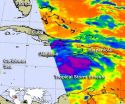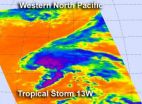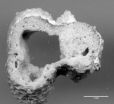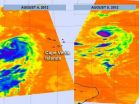(Press-News.org) Despite a twenty-five year old law that bans "patient dumping" the practice continues to put uninsured Americans at risk, according to a national team of researchers led by a professor at the George Washington School of Public Health and Health Services. Patient dumping is the practice of turning away or transferring uninsured patients with emergency medical conditions.
The study, which appears in the August issue of Health Affairs, suggests that hospitals still practice "patient dumping" which is in violation of the law. The researchers investigate and present five case studies of patients who had been denied care or transferred in an unstable condition to Denver Health, a large, urban safety-net hospital. The researchers conclude not only that such "patient dumping" occurs under the current interpretation and enforcement of the law but that Denver Health is hardly alone.
"Federal and state investigators must do a better job of identifying violators of the law and enforcing the ban on patient dumping," says Sara Rosenbaum, lead author of the study and the Harold and Jane Hirsh Professor of Health Law and Policy, George Washington University School of Public Health and Health Services in Washington, D.C. "If we do not start aggressively enforcing the law, millions of uninsured Americans will continue to get no care at all or incomplete care," she said.
In Denver, and in communities around the nation, the cost of treating millions of Americans without insurance has been rising. This in-depth study of the law and individual cases suggests not-for-profit and for-profit hospitals engage in this practice—which adds to the burden shouldered by the hospital of last resort—often public hospitals that already care for many patients without the means or insurance to pay for their own care.
The researchers looked at the legal interpretation and enforcement of the Emergency Medical Treatment and Labor Act (EMTALA), a 1986 law that requires hospitals to provide appropriate medical screening and stabilizing care to uninsured patients with emergency conditions. In addition, the researchers analyzed case studies that actually occurred at Denver Health and illustrate the type of violations that commonly occur.
Rosenbaum and colleagues looked at existing lawsuits and a 2003 rule issued under the George W. Bush administration to clarify the law's implementation. They concluded that court rulings, regulations and other factors have allowed hospitals to skirt the intent of the law. For example, the 2003 regulations say that patients have to arrive at a "dedicated emergency department" and that EMALTA does not apply when a critically ill patient shows up in another department.
In addition, the researchers say that even outright violators of the law are rarely identified or penalized. The end result: Public hospitals like Denver Health often get patients who are uninsured and diverted or transferred in a medical emergency. The researchers highlight five real-life examples of such potential violations, including a 64-year old who was transferred 350 miles to Denver Health even though the local hospitals had the capacity to treat the woman's life-threatening condition.
In order to stop this practice, the federal government must develop a more effective system for reporting non-compliance with the law, the authors say. They also argue that federal and state regulators must establish clearer standards to make it easier for hospitals to avoid violations. And they say a simplified reporting system, one that shifts responsibility from patients and hospitals to enforcement agencies, would go a long way to help curb the practice of "patient dumping."
INFORMATION:
In addition to Rosenbaum, the team included researchers from Denver Health, a 477-bed safety net hospital and multiple outpatient facilities.
To view report: http://content.healthaffairs.org/content/31/8/1749.abstract
About the George Washington University School of Public Health and Health Services:
Established in July 1997, the School of Public Health and Health Services brought together three longstanding university programs in the schools of medicine, business, and education that we have since expanded substantially. Today, more than 1,100 students from nearly every U.S. state and more than 40 nations pursue undergraduate, graduate, and doctoral-level degrees in public health. Our student body is one of the most ethnically diverse among the nation's private schools of public health. http://sphhs.gwumc.edu/
END
CHAMPAIGN, Ill. — A study from University of Illinois economics professors demonstrates a new method to analyze the relationships among voters' issue preferences, the candidates' policy positions and voter behavior.
Estimating the distribution of voter preferences and the extent of policy divergence between the candidates' platforms, economics professors Stefan Krasa and Mattias Polborn are able to separate observed changes in voter behavior into those driven by voter radicalization versus those caused by increased policy differences between the two parties.
"We have ...
Health coverage for the poorest Americans could be in jeopardy in many states as a result of the U.S. Supreme Court's ruling last month on the Affordable Care Act, according to a new legal analysis. The report examines federal and state Medicaid options following the United States Supreme Court's ruling in NFIB v Sebelius and appears in the August issue of the journal Health Affairs.
"Some states will use the court's decision as an excuse to delay or refuse to participate in the expansion of Medicaid as outlined in the Affordable Care Act," says lead author of the report, ...
URBANA – The trade in ivory was largely outlawed in 1989, but poaching continues and remains a serious threat to the African elephant. Seizures of large amounts of ivory, sometimes over a ton, continue to occur. Research by Alfred Roca, an assistant professor at the university, could be the basis for the development of new law enforcement tools.
Roca has found a way to determine where the ivory comes from. With funding from the Division of International Conservation of the U.S. Fish and Wildlife Service, he and his collaborators have sampled elephants at 22 locations ...
ZURICH — Though sophisticated three-dimensional imagery is abundant in computer-generated games and movies, a group of researchers from Disney Research, Zürich, University of California, San Diego, Limbic Software, and RWTH Aachen University say they have gained insights to improve the rendering of those images by envisioning a flat, two-dimensional world.
The fundamental physics of light is easier to understand in that 2D world than in a 3D environment, they said, and enabled them to develop simplified equations for governing the behavior of light. This in turn allowed ...
VIDEO:
An animation of satellite observations shows the progression of Tropical Storm Ernesto from Aug. 4-6, 2012. The animation begins when Ernesto was south of Jamaica and ends when the storm...
Click here for more information.
Tropical Storm Ernesto continues to track through the Caribbean and satellite data and NOAA hurricane hunter aircraft revealed a strengthening storm mid-day on Monday, August 6. NASA infrared data revealed strong thunderstorms on August 5 that ...
When NASA's Aqua satellite captured an infrared view of the northwestern Pacific's latest tropical storm, Tropical Storm 13W, the data revealed the bulk of the heavy rainfall on the northern side of the center.
NASA's Aqua satellite passed over Tropical Storm 13W on August 6 at 0205 UTC (Aug. 5 10:05 a.m. EDT). The Atmospheric Infrared Sounder (AIRS) instrument captured an infrared image of the cloud temperatures that showed the strongest storms (purple) and heaviest rainfall north and east of the center of circulation.
Infrared imagery shows temperature and the higher ...
Microbes, sponges, and worms—the side effects of pollution and heavy fishing—are adding insult to injury in Kenya's imperiled reef systems, according to a recent study by the Wildlife Conservation Society and the University of Azores.
The authors of the study have found that pollution and overfishing on reef systems have an ecological cascading effect—the proliferation of microbes, sponges, and worms—that further degrade corals, a discovery that underlines the complexity of reefs and possible solutions.
The study appears in the online edition of Marine Ecology Progress ...
The sixth tropical storm of the Atlantic Ocean hurricane season formed over the past weekend, and NASA kept an on its progression. Tropical Storm Florence was born in the eastern Atlantic and weakened when it interacted with dry air.
On Friday, August 3, the low pressure area known as "System 90L" was being watched for development. It was located south of the Cape Verde Islands off the African coast. By the early evening (Eastern Daylight Time) it quickly organized. System 90L strengthened and became Tropical Storm Florence in the eastern Atlantic. Over August 4 and 5 ...
ZURICH — Scientists have yet to fully unravel the mysteries of rainbows, but a group of researchers from Disney Research, Zürich, UC San Diego, Universidad de Zaragoza, and Horley, UK, have used simulations of these natural wonders to unlock the secret to a rare optical phenomenon known as the twinned rainbow.
Unlike the more common double-rainbow, which consists of two separate and concentric rainbow arcs, the elusive twinned rainbow appears as two rainbows arcs that split from a single base rainbow. Sometimes it is even observed in combination with a double rainbow. ...
"Pants on fire" isn't the only problem liars face. New research from the University of Notre Dame shows that when people managed to reduce their lies in given weeks across a 10-week study, they reported significantly improved physical and mental health in those same weeks.
Funded by a grant from the John Templeton Foundation, the "Science of Honesty" study was presented recently at the American Psychological Association's 120th annual convention.
"We found that the participants could purposefully and dramatically reduce their everyday lies, and that in turn was associated ...



